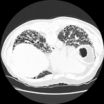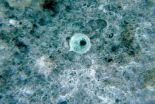4 acute mushroom poisonings in 2 weeks
Georgetown doctors test milk thistle to counter amanitin toxins in the liver
2012-05-21
(Press-News.org) SAN DIEGO – On September 12, 2011, a Springfield, Virginia man arrived at MedStar Georgetown University Hospital (MGUH) in the early stages of liver failure. The man had mistakenly eaten poisonous mushrooms, handpicked from his yard. He would be the first of four patients in the course of two weeks to seek treatment at MGUH for mushroom (amanitin) poisoning. Their clinical course, management, and outcomes were presented today at Digestive Disease Week (DDW) in San Diego, the largest international gathering of physicians and researchers in the field of gastroenterology, hepatology, endoscopy and gastrointestinal surgery.
"When the Virginia man arrived at his local emergency department, a clinical diagnosis of mushroom poisoning was made," recalls Jacqueline Laurin, M.D., a transplant hepatologist at the Georgetown Transplant Institute, a part of MGUH and Georgetown University Medical Center.
"He had eaten the mushrooms, gotten very ill and his liver enzymes were very elevated with signs of severe liver dysfunction," Laurin recalls. The man was transferred to MGUH because in some cases, a liver transplant is necessary following amanitin poisoning.
Laurin's team called the local Poison Control Center who in turn, put them in contact with a California physician who is the principal investigator for a study using the IV preparation of milk thistle seeds (silibinin) in the United States for amanitin poisoning. Arrangements were made to have the drug flown and then couriered to the hospital where it arrived within hours. The patient received silibinin that evening.
Because silibinin is not yet approved by the U.S. Food and Drug Administration (FDA), physicians would only be able to offer it to one patient under the FDA's "emergency use" one-time exemption. Any future treatment with silibinin would require administration as part of a clinical study with approval of Georgetown University Medical Center's Institutional Review Board, a committee charged with the protection of humans in research studies.
"We knew it wasn't out of the realm of possibility that another person could show up with mushroom poisoning and without a study in place, we wouldn't have the option of offering the silibinin," Laurin explains.
At that time, mushrooms were cropping up in yards and parks in the Washington, DC area in greater numbers than usual because of increased rainfall for the season.
One week later, and before the protocol could be completed, a second patient with mushroom poisoning arrived at Georgetown.
The patient's status prompted an emergency meeting of the Institutional Review Board comprised of clinical and non-clinical members from the Medical Center and MGUH, who approved the protocol, thus allowing the second patient to be treated with the same IV preparation of milk thistle, silibinin, as the first patient received.
A few days later, two more patients arrived – friends who had mistaken the poisonous mushrooms as innocuous. They too received silibinin.
Laurin says the initial clinical presentation of amanitin poisoning mimics gastroenteritis in the form of nausea, vomiting, abdominal pain, and diarrhea followed by a period of apparent recovery then the development of acute hepatitis and jaundice.
"Early recognition of mushroom ingestion as a cause of acute hepatitis is paramount to initiate treatment and hopefully preventing progression to acute liver failure, liver transplant, or death," she says.
There is no standard guideline for treating people with acute hepatitis from mushroom toxicity. "Without a standard treatment, aggressive hydration to remove the amanitin toxin is one of few ways to reduce damage to the liver," Laurin explains. "For our recent amanitin patients, all received intravenous silibinin. We also placed a nasobiliary drain in two of the patients in an attempt to disrupt the enterohepatic pathway of amanitin and remove amanitin toxins from the body."
"Because our hospital is affiliated with Georgetown University Medical Center, our treatment options include agents in clinical studies," explained Maiyen Tran Hawkins, D.O., a gastroenterology fellow in the transplant hepatology inpatient service and lead author of the DDW abstract. "That access and our team approach allowed us to quickly and successfully deliver a multi-modality treatment with IV silibinin and ERCP for nasobiliary drainage placement. We were able to prevent liver failure and all patients fully recovered without significant consequence."
Hawkins presented the clinical course, management, and outcomes of the four cases during a poster session at DDW.
"While these results appear promising, we need to know much more about silibinin, such as the timing for delivering it, what dose is most effective and whether or not a nasobiliary drainage is even necessary in combination with silibinin," explains Laurin. "I think we can point to this case series as a treatment success, but clearly more work and education needs to be done to reduce morbidity and death from amanitin poisoning."
###
Additional authors on the DDW abstract include Marco Paez, B.S., and Michael E. Goldberg, D.O. The authors report having no personal financial interests related to this work.
About Georgetown University Medical Center
Georgetown University Medical Center is an internationally recognized academic medical center with a three-part mission of research, teaching and patient care (through MedStar Health). GUMC's mission is carried out with a strong emphasis on public service and a dedication to the Catholic, Jesuit principle of cura personalis -- or "care of the whole person." The Medical Center includes the School of Medicine and the School of Nursing & Health Studies, both nationally ranked; Georgetown Lombardi Comprehensive Cancer Center, designated as a comprehensive cancer center by the National Cancer Institute; and the Biomedical Graduate Research Organization (BGRO), which accounts for the majority of externally funded research at GUMC including a Clinical Translation and Science Award from the National Institutes of Health. In fiscal year 2010-11, GUMC accounted for 85 percent of the university's sponsored research funding.
END
ELSE PRESS RELEASES FROM THIS DATE:
2012-05-21
Statins prevent cancer and reduce death from all causes in heart transplant recipients. The findings were independent of cholesterol levels.
The research was presented at the Heart Failure Congress 2012, 19-22 May, in Belgrade, Serbia. The Congress is the main annual meeting of the Heart Failure Association of the European Society of Cardiology.
Cancer is the leading cause of death late after heart transplantation. Skin cancer is particularly common, but solid organ cancers including colorectal cancer, prostate cancer and lymphoma also occur. The increased rate of ...
2012-05-21
Madison, Wis. and San Francisco — Sleep-disordered breathing (SDB), commonly known as sleep apnea, is associated with an increased risk of cancer mortality, according to a new study.
While previous studies have associated SDB with increased risks of hypertension, cardiovascular disease, depression, and early death, this is the first human study to link apnea with higher rate of cancer mortality. Lead author Dr. F. Javier Nieto, chair of the department of population health sciences at the UW School of Medicine and Public Health, says the study showed a nearly five times ...
2012-05-21
A combination of three drugs used worldwide as the standard of care for a serious lung disease puts patients in danger of death or hospitalization, and should not be used together to treat the disease, called idiopathic pulmonary fibrosis, according to the surprising results of a rigorous independent study.
The study, which will appear online May 20 in the New England Journal of Medicine to coincide with a presentation at the annual meeting of the American Thoracic Society, was conducted by IPF Clinical Research Network, funded by the National Heart, Lung, and Blood Institute ...
2012-05-21
A team of researchers from UCSF and UC San Diego has identified an approved arthritis drug that is effective against amoebas in lab and animal studies, suggesting it could offer a low-dose, low cost treatment for the amoebic infections that cause human dysentery throughout the world.
Based on these results, the team has received Orphan Drug Status for the drug, known as auranofin, from the U.S. Food and Drug Administration, and has applied for approval to start clinical trials to treat both amebiasis and the parasite Giardia in humans.
The findings, which showed that ...
2012-05-21
Research by a collaborative group of scientists from UC San Diego School of Medicine, UC San Francisco and Wake Forest School of Medicine has led to identification of an existing drug that is effective against Entamoeba histolytica. This parasite causes amebic dysentery and liver abscesses and results in the death of more than 70,000 people worldwide each year.
Using a high-throughput screen for drugs developed by the research team, they discovered that auranofin – a drug approved by the US Food and Drug Administration 25 years ago for rheumatoid arthritis – is very effective ...
2012-05-21
Helen E. Davies, M.D., of the University Hospital of Wales, Cardiff, and colleagues compared the effectiveness of treatments to relieve breathing difficulties among patients with malignant pleural effusion (presence of fluid in the pleural cavity [space between the outside of the lungs and the inside wall of the chest cavity], as a complication of malignant disease). The treatments compared were chest tube drainage and talc slurry for pleurodesis (a procedure in which the pleural space is obliterated) vs. indwelling pleural catheters (IPCs).
Malignant pleural effusion ...
2012-05-21
Peter B. Bach, M.D., of the Memorial Sloan-Kettering Cancer Center, New York, and colleagues conducted a systematic review to examine the evidence regarding the benefits and harms of low-dose computerized tomography (LDCT) screening for lung cancer, which is the leading cause of cancer death. "Most patients are diagnosed with advanced disease, resulting in a very low 5-year survival rate," the authors write. "Renewed enthusiasm for lung screening arose with the advent of LDCT imaging, which is able to identify smaller nodules than can chest radiographs."
For the review, ...
2012-05-21
Margaret Rosenfeld, M.D., M.P.H., of Seattle Children's Hospital, and colleagues conducted a study to examine if hypertonic saline would reduce the rate of pulmonary exacerbations in children younger than 6 years of age with cystic fibrosis (CF). Inhaled hypertonic saline is recommended as therapy for patients 6 years or older with CF, but its efficacy has not been evaluated in patients younger than 6 years.
In the randomized trial, the active treatment group (n = 158) received 7 percent hypertonic saline and the control group (n = 163) received 0.9 percent isotonic saline, ...
2012-05-21
To learn its signature melody, the male songbird uses a trial-and-error process to mimic the song of its father, singing the tune over and over again, hundreds of times a day, making subtle changes in the pitch of the notes. For the male Bengalese finch, this rigorous training process begins around the age of 40 days and is completed about day 90, just as he becomes sexually mature and ready to use his song to woo females.
To accomplish this feat, the finch's brain must receive and process large quantities of information about its performance and use that data to precisely ...
2012-05-21
A new study led by researchers at Hospital for Special Surgery identifies the mechanism by which a cell signaling pathway contributes to the development of rheumatoid arthritis (RA). In addition, the study provides evidence that drugs under development for diseases such as cancer could potentially be used to treat RA. Rheumatoid arthritis, a systemic inflammatory autoimmune disease that can be crippling, impacts over a million adults in the United States.
"We uncovered a novel mechanism by which the Notch pathway could contribute to RA, said Xiaoyu Hu, M.D., Ph.D., a ...
LAST 30 PRESS RELEASES:
[Press-News.org] 4 acute mushroom poisonings in 2 weeks
Georgetown doctors test milk thistle to counter amanitin toxins in the liver


